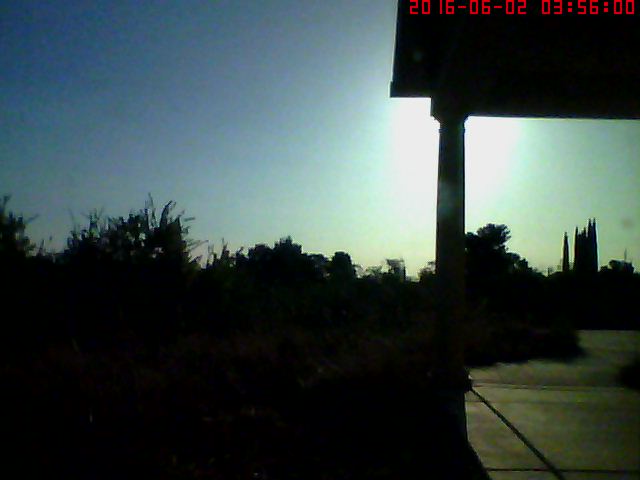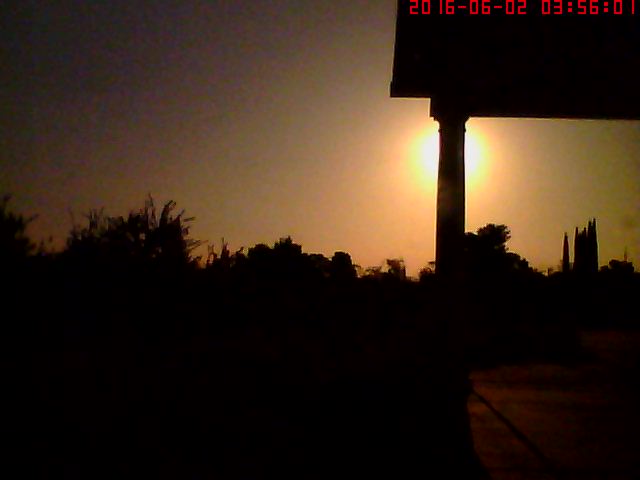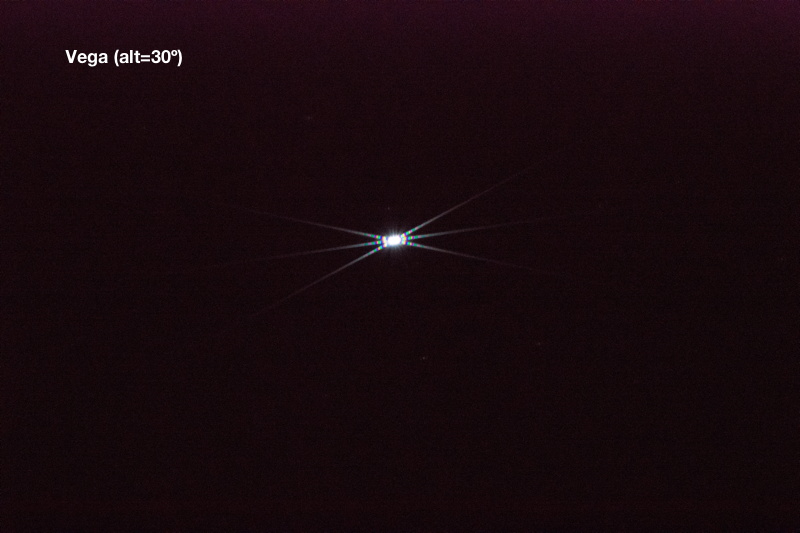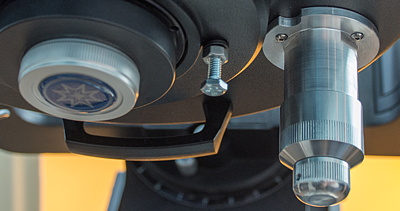More on Thursday's Fireball;
More LX600 Tests
Posted: 3 June 2016
The fireball that occurred over southern Arizona, Thursday morning, 2 June 2016, at 0356 MST, is now being reported as a small asteroid. From the report on Spaceweather.com (©2016, Spaceweather.com):
Bill Cooke of NASA's Meteoroid Environment Office says this is the brightest fireball detected in the 8-year history of the NASA's All Sky Fireball Network, an array of cameras that monitors fireball activity across the USA. According to NASA analysts, the asteroid was ~10 feet (3 meters) in diameter with a mass in the tens of tons and a kinetic energy of approximately 10 kilotons. Eyewitness reports placed the object at an altitude of 57 miles above the Tonto National Forest east of the town of Payson, moving almost due south. It was last seen at an altitude of 22 miles above that same forest. "There are no reports of any damage or injuries—just a lot of light and few sonic booms," says Cooke. "If Doppler radar is any indication, there are almost certainly meteorites scattered on the ground north of Tucson."
These are images that one of my webcams captured:


And no, I have not (yet) found any meteorites in my yard.
Meade wanted me to do a final test on the 12" LX600. I did that following the Oracle Dark Skies Committee meeting Thursday night. During the day, the sky was covered by a lot of bluish-white smoke from a wildfire well north of Oracle, and the smokey skies continued into the night.
|
Open: Thursday, 2 June 2016, 2039 MST Temperature: 87°F |
Session: 976 Conditions: Clear but smokey sky, calm |
Equipment Used:
12" f/8 LX600 w/StarLock
Wireless AutoStar II handset
2" 24mm UWA eyepiece
Focal reducer
Camera:
D7200 DSLR
2047 MST: LX600 ON, StarLock OFF. Took a quick look at Mars, 102X.
Then began setting up for the Meade tests. I mounted the D7200 DSLR at prime focus + visual back. I used the Bahtinov Mask for focusing and left the mask on the telescope for all the focus shift test images.
Slewed to Vega (altitude 30°) and focused. Took this image showing the "in-focus" diffraction pattern:

Then tightened the mirror lock bolt that Meade had me add for tests done on the previous session:

As the nut was tightened the image would go out-of-focus:

When the nut was loosened the image would return to being in-focus. I was finally able to get the focus close to correct with the nut tight. Slewed the telescope to Denebola (altitude 60°). The focus shifted during the slew:

I refocused the star but I had to start with the image slightly out-of-focus so that tightening the nut would bring the image into focus. This was very much a trial-n-error process. I was finally able to get the image in-focus with the nut tight to lock the mirror.
Slewed back to Vega and there was no focus change this time. Apparently I got the nut tight enough to prevent the mirror from moving. However, there was no way to tell how tight was "tight enough" to prevent movement.
I passed these test results to Meade on Friday, 3 June. Awaiting their evaluation.
As a final check of the mirror lock using the 3" bolt I mounted the DSLR at prime focus + visual back + Optec focal reducer. I focused on Vega with the mask and locked the mirror with the bolt nut. The bolt length was OK for this configuration. I removed the mask and took this 30 seconds, ISO 6400, exposure:

The image looks to be in good focus across the field-of-view.
2132 MST: with the tests completed, I removed the camera and focal reducer from the telescope. Viewed Saturn, 102X.
Then began closing up for the night as the sky was too smokey for good viewing. As I was closing up the observatory I saw and terminated a Kissing Bug.
|
Close: Thursday, 2 June 2016, 2146 MST Temperature: 80°F |
Session Length: 1h 07m Conditions: Clear, smokey sky |
Comments are welcome using Email. Twitter users can use the button below to tweet this report to your followers. Thanks.
Cassiopeia Observatory Home Page
Copyright ©2016 Michael L. Weasner / mweasner@me.com
URL = http://www.weasner.com/co/Reports/2016/06/03/index.html
